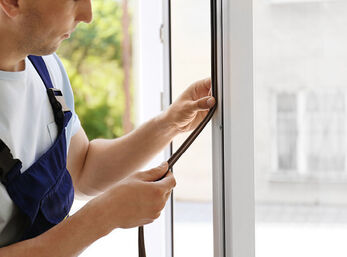The 2-in-1 problem-solving garage door seal
We first coextruded a seal for the bottom of garage doors in 2009; there have been several iterations since then. However, this most recent redesign has solved inherent problems that were insurmountable with previous designs. This included both product and manufacturing challenges.
Double trouble
In terms of manufacturing challenges, previously, the hollow nature of the coextrusion made it difficult to extrude at speed because the rigid base was difficult to calibrate. In addition, the soft seal section was prone to jamming in the calibrator, resulting in low production efficiency and unacceptable scrap rates!
For our client, the main issues with the previous products were screwing the seal to the bottom door panel, pinching and distortion of the soft seal section by the packing media, and that replacement of the seal required partial disassembly of the door panels.
Reset, redesign and resolve
Rather than continue to evolve a somewhat imperfect design we cleared the slate and created something quite different. Even though we were more than confident the new design solved all of the previous problems, it was such a departure from the seals that came before that a 3D model of the profile was needed to demonstrate the idea to our client to get it over the line.
Now, the rigid section is located in a recess in the bottom of the sheet metal door panel and held in place with screws; and because the flexible seal section is open, the screws can be applied directly from the outside. Once door assembly is complete, the soft seal section (still open) can be wrapped around the edge of the bottom door panel, removing the issue of crushing the assembled seal and reducing the risk of accidental damage. Once the door is installed, the open end of the soft seal section is looped around the bottom of the door and zipped into place. If the seal needs to be replaced, that section can be unzipped to provide easy access to the screws with no dismantling of the door required
Win win
The manufacturing advantages of this design are considerable. Because the profile surfaces are open, the rigid section can be fully calibrated, enabling a higher extrusion rate and shorter time to get the profile running. The design has also been optimised to enable close nesting of the profile so that shipping volumes are half of the previous design!

